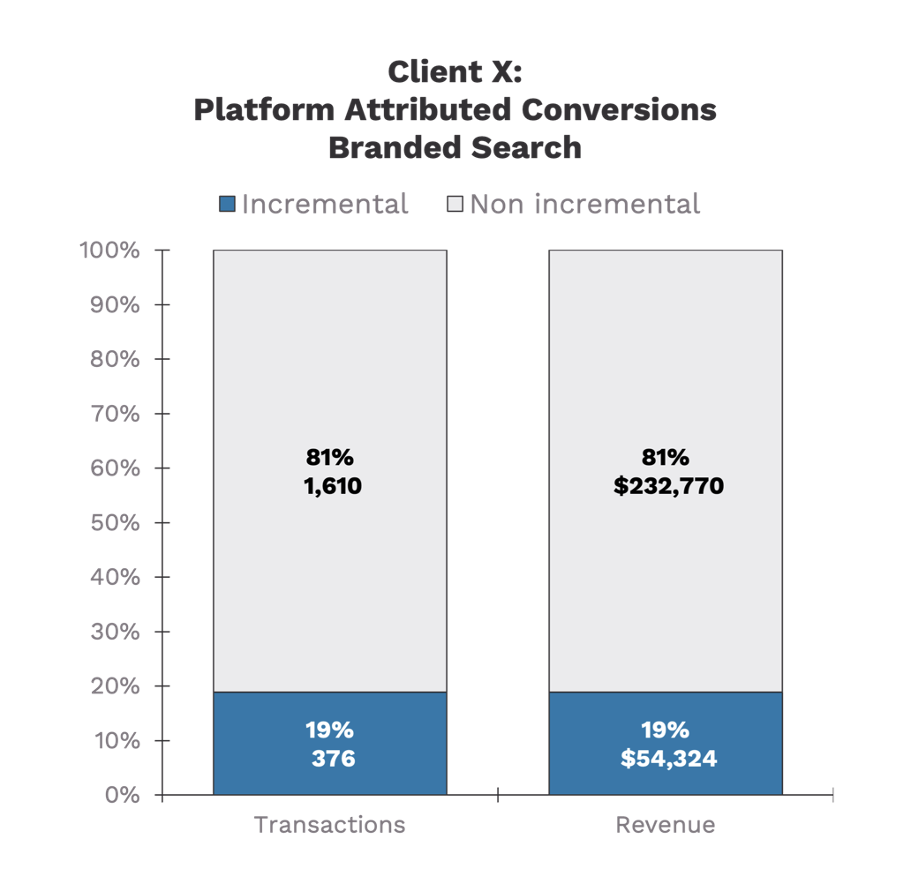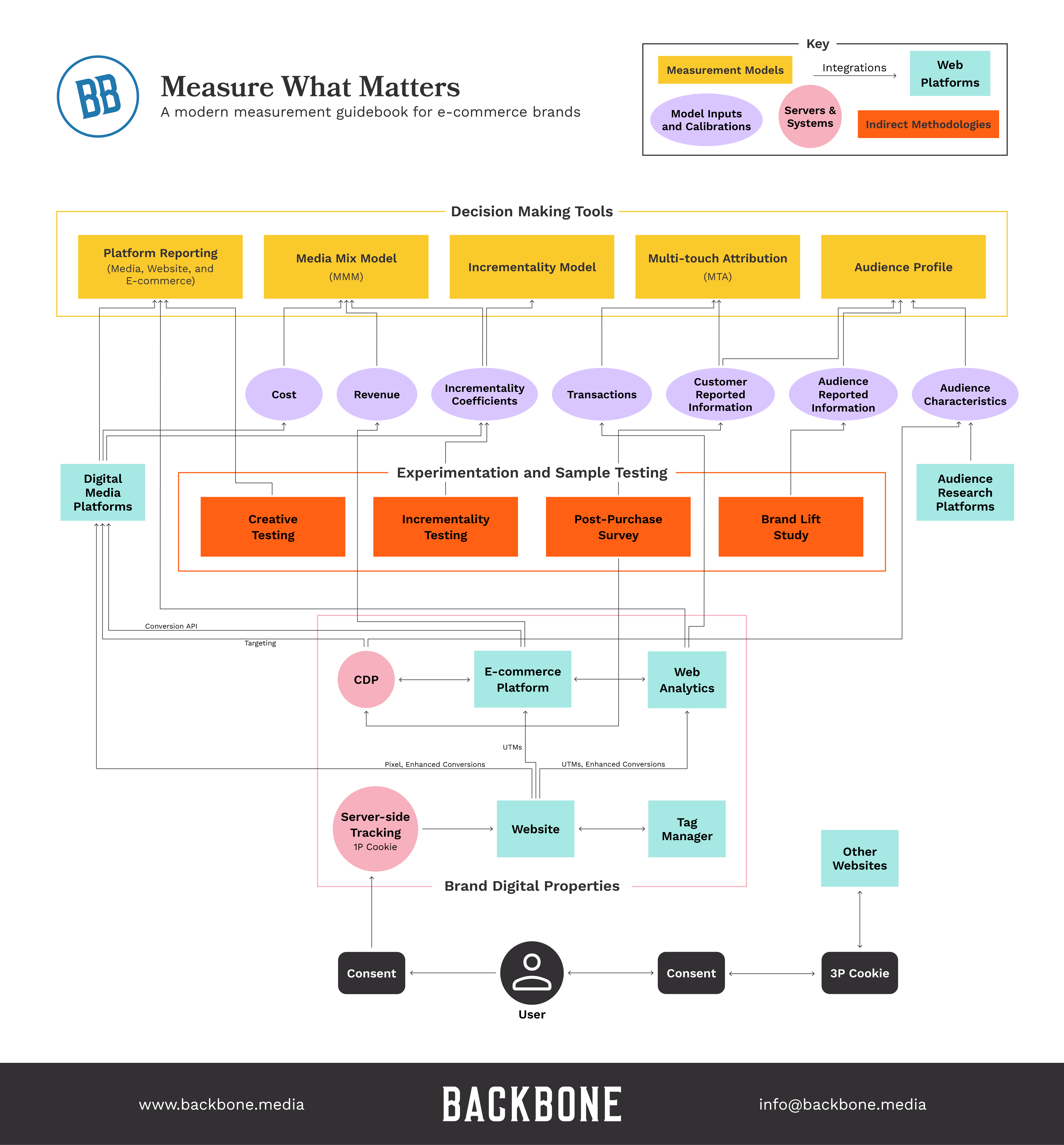Measure What Matters

An ongoing guide from Backbone to help navigate the complex, changing world of media measurement
As an advertising agency with chops in paid media, public relations, search marketing, affiliate marketing, social media, influencer marketing, creative and content, and data analytics, we get measurement. In this content series, we’re delving into the nuanced and multifaceted measurement process to help marketers understand which measurement solutions are best for their brand and how they can be integrated into a holistic measurement strategy.
But first, why is it important to measure what matters?
Brands can’t rely on traditional digital measurement strategies
A multitude of headwinds are eroding the value of legacy measurement tools: walled gardens, cookie deprecation, user consent, privacy regulation, changing audience behaviors, and more customer touchpoints than ever. These challenges increase the difficulty of attributing business success to media tactics.
#1: View-through tracking is becoming less effective
Media behemoths and regulatory agencies are simultaneously instituting changes that make it more difficult for marketers to trace impressions to conversion outcomes. Companies like Apple, Google, and Meta are building walled gardens to restrict the measurement of their environments for competitive gain. In addition, governments and users are protecting personal privacy by enacting stricter rules about which data marketers can collect, making it more difficult to measure the full customer journey and target certain users.
While advanced, privacy-compliant identity solutions will recover some signal loss, these challenges still threaten the validity of attribution tools reliant on tracking exposures and may undervalue indirect media.
#2: Click-based measurement doesn’t show the full picture
A lack of view-through visibility may prompt marketers to focus on click-based measurement in web analytics platforms like GA4. However, this may measure only a fraction of the exposures that are leading to conversions in a media mix. According to a recent Meta study, 85% of conversions are post-view*, meaning that customers are frequently not clicking an ad before they convert. Modern analytics platforms may account for these missing connections via data-driven attribution methodologies, but this shifting consumer behavior still leaves major gaps in click-based measurement.

#3: Platforms may be taking too much credit
One of the only places a marketer can see both view- and click-through conversion results is within platform attribution. Unfortunately, various media companies will take credit for the same conversions, leading to duplication across channels and no indication of which tactics truly influenced results. In many cases, Backbone’s independent testing has found that some tactics may only drive as many as 19% of conversions claimed by the platform.

There is no single source of truth
Brands must employ several, self-calibrating tools to validate their media performance. However, understanding the array of available solutions can be overwhelming.

The Measure What Matters series will map out every part of a holistic measurement strategy. First, covering primary decision-making tools like media mix modeling, incrementality, and multi-touch attribution; then, focusing on other aspects like experimentation, sample testing, web properties, digital infrastructure, and more. Each topic will cite Backbone case studies and answer questions like:
- How do these tools work?
- What questions do they answer and what are their gaps?
- What are the implementation challenges and limitations?
- How do results from this tool calibrate others?
Stay tuned! To get this news straight to your inbox, sign up for Backbone’s newsletter: Field Notes.
*for the retail vertical
